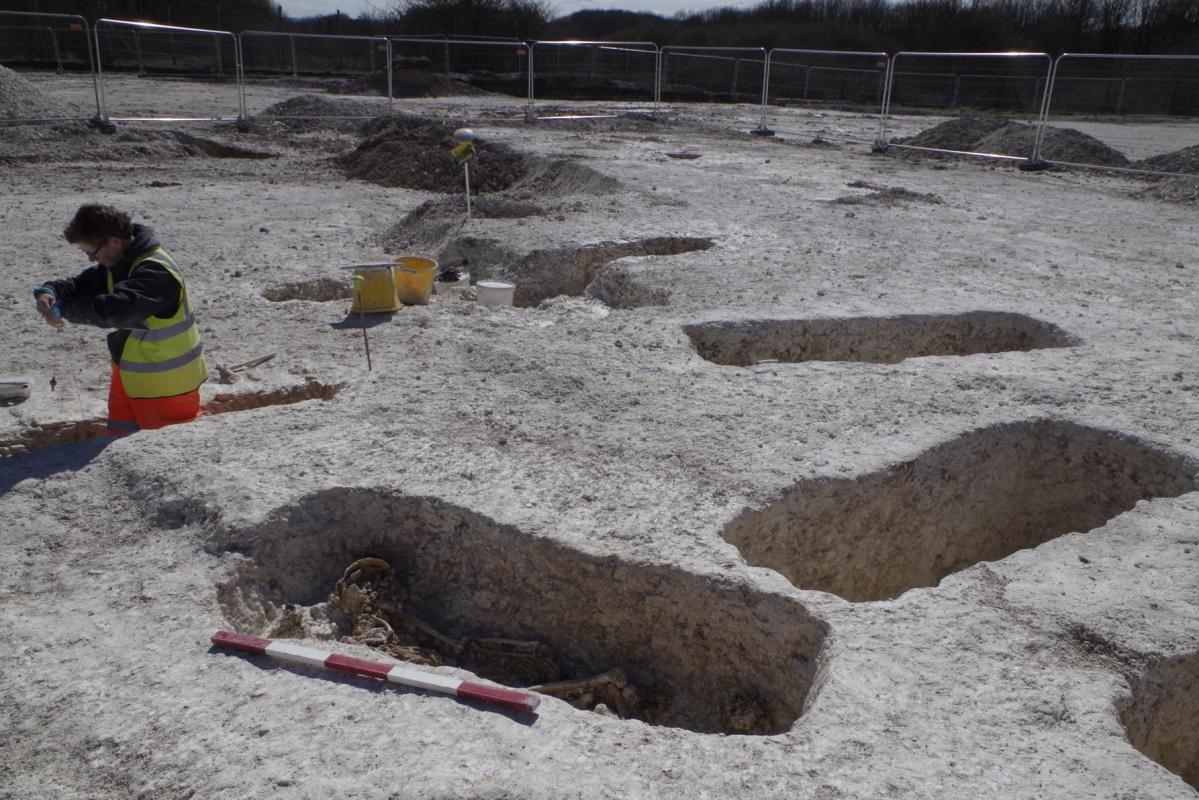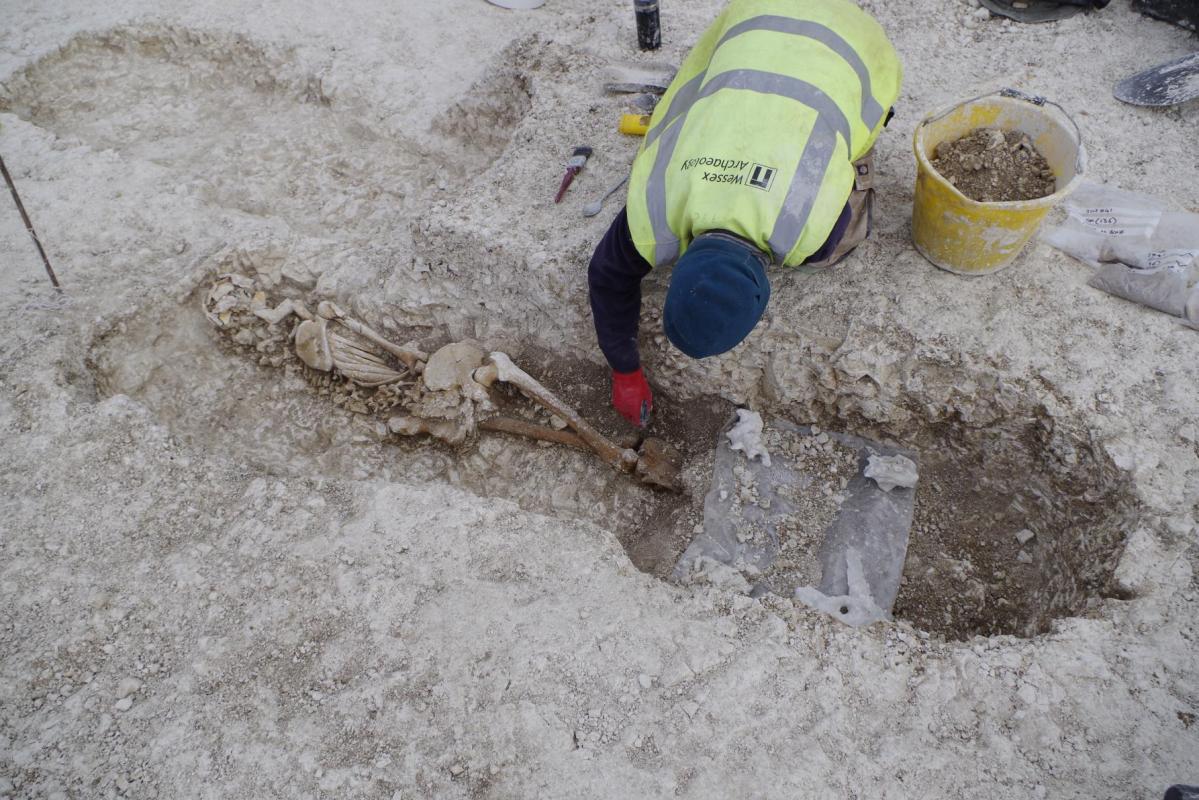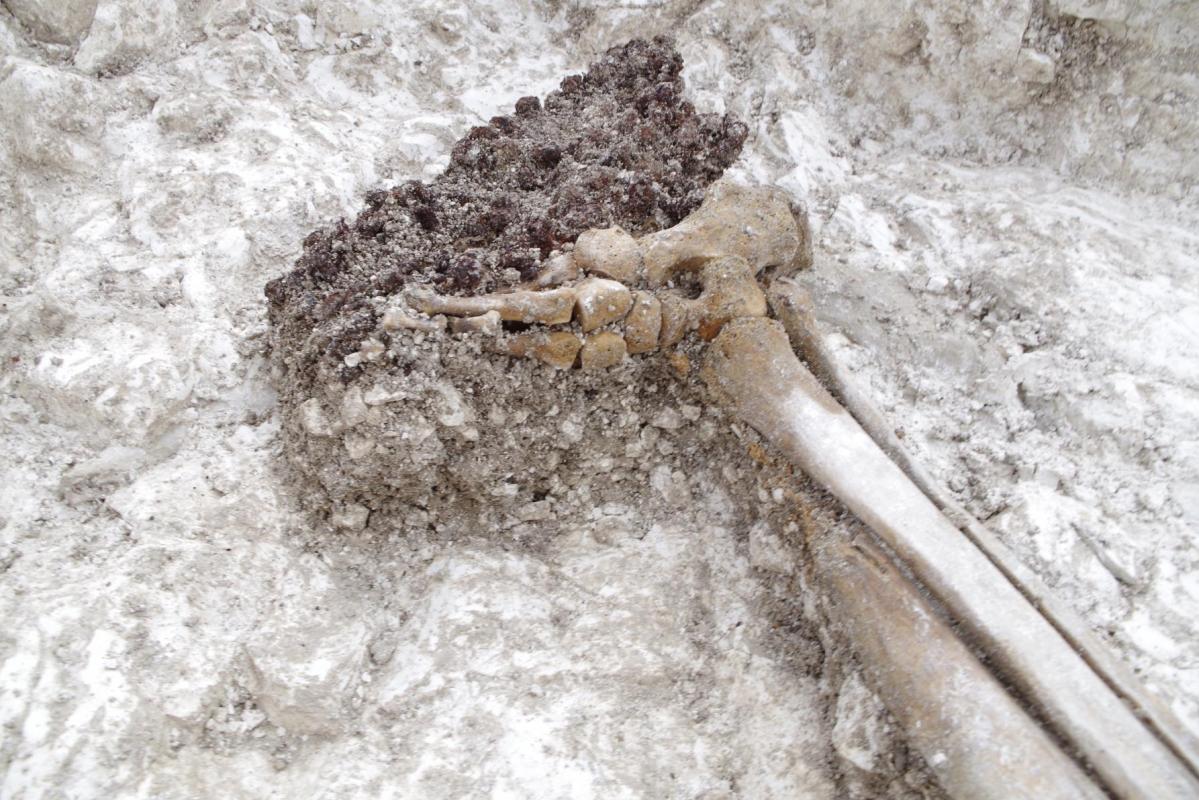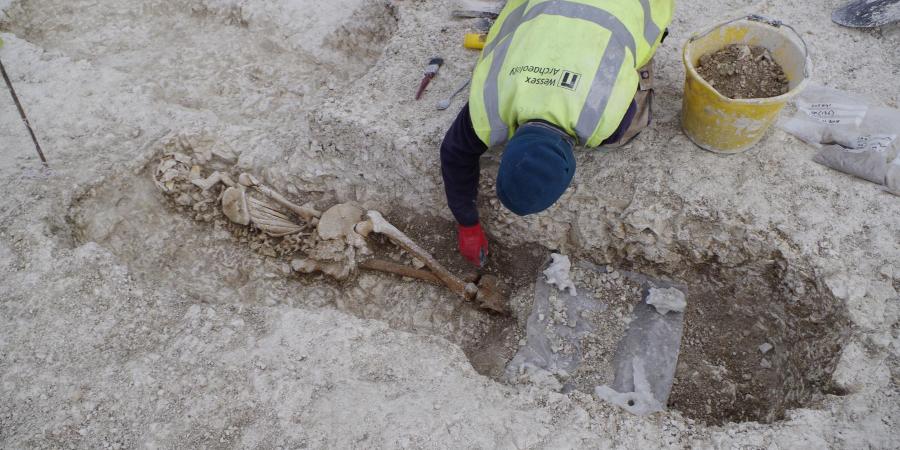The remains of a Romano-British cemetery and a small section of Iron Age ditch have been identified on land within the fence-line at a former Army barracks in Ludgershall. The Ministry of Justice granted a Licence to exhume and our team of archaeologists excavated 14 graves in March of this year.
Most, if not all, of the people buried were laid to rest wearing hob-nailed shoes or boots. One individual was buried with a spindlewhorl and another with a single coin. The coin (a nummus) was minted during the reign of the Emperor Flavius Valens between 364 and 378 AD and is likely to have been issued from Trier, London or Arles.
The small section of ditch, discovered during the excavation of the graves, is approximately 800 years earlier than the Romano-British cemetery and belongs to the Middle Iron Age (Approximately 500 to 400 BC). It is entirely possible that the ditch once enclosed a settlement exploiting a prominent slope close to fertile soils.
Despite years of remodelling and redevelopment of the barracks, the graves survived reasonably well. They were located in a prominent position overlooking a gently sloping, south-facing valley. The post-excavation analysis phase has only just begun but already, there are tales to tell.



Cut through solid chalk, the graves were aligned either north−south or west−east and most contained one burial each. The individuals appear to have been buried in coffins or in plank-lined graves and, like many other cemeteries of a similar date, there were few grave goods. Wessex Archaeology has been engaged in major excavations on behalf of the Army Basing Programme for a number of years and were commissioned by Lovell Partnerships to support their work in preparation of the land for the development of new family accommodation for Army personnel relocating to Wiltshire in 2019 from bases in Germany and within the UK.
The site of the former Corunna Barracks will see the construction of 242 new army family homes under the Army Basing Programme on behalf of the Defence Infrastructure Organisation (DIO). The development also includes land for a new primary school and community facility, public open space, play areas, landscaping, internal roads and associated infrastructure.
Corunna Barracks had its origins in the huge construction programme to build vehicle depots to maintain and store the military vehicles that replaced horse transport. Corunna Barracks played a vital role during Operation Bolero as a Central Vehicle Depot on the arrival of United States forces in Britain preparing for the invasion of occupied Europe in 1944.
The vehicle depot was closed in 1997 and was used for a time by the Medical Supplies Agency before its most recent use in support of major exercises on Salisbury Plain prior to deployments to Afghanistan.
Project Manager Si Cleggett said ‘We are in the embryonic stages of our investigations and will be in a position to offer more detail soon. The chance survival of this small group of late Romano-British burials will enhance our understanding of the area in the waning years of the Roman occupation. There are few records of Roman find-spots in and around Ludgershall but one of the Roman villas recorded at Shoddesdon Grange, Thruxton, Ragged Appleshaw and Redenham may have served as the administrative focus of large farming estates possibly including the Ludgershall area.’
‘I often hear how mesmerised American tourists are by our incredibly rich heritage − I have recently wondered just how amazed American World War II troops drinking coffee in their canteen would have been to know their boots were only half a metre above the remains of people who lived there in the last days of Roman Britain!’
Emma Robertson on-site osteoarchaeologist said ‘I was a member of the excavation team sent out in March to record the 14 Romano-British graves uncovered at the former Corruna Barracks. This site is a good example for the phrase ‘every feature is unique’, with each grave exhibiting slightly different challenges from both an excavation and osteoarchaeological perspective.The excavation challenges arose from the shape and size of the graves; from a few measuring almost a metre deep, to a series of intercutting graves. Most of the individuals were buried wearing shoes and placed within coffins, the surviving hobnails and coffin nails adding to the level of delicate excavation and recording required. Finds such as a Romano-British coin and a spindlewhorl added to the narrative of the landscape and the individuals buried within it. This site will assist in our wider understanding of the Roman-British occupation of the Salisbury Plain landscape, adding to the few records of finds found in and around the local Ludgershall area. Human skeletal remains allow us a fascinating opportunity to study and understand the individuals of the past and can give us an insight into their daily lives.’
Alistair Zochowski on-site leader said ‘As the on-site leader of the Ludgershall excavation I feel a great sense of satisfaction that we uncovered the remains of 14 previously unknown Roman individuals and earlier evidence of occupation. The information that the burials will provide combined with the analysis of the finds retrieved from the ditch will add to the corpus of knowledge for the area and will help to shed light on the activities that were occurring 1700 years ago.’
Major General Richard Wardlaw OBE, the senior Army officer responsible for the ABP, said “The scale of the archaeology found at our ABP sites has been truly amazing, ranging from an insight into life 1,000 years before Stonehenge right up to World War 1 training tunnels and World War 2 artefacts. These latest finds shine a light into yet another era in the history of this part of Wiltshire and we are all keen to know the conclusions of Wessex Archaeology’s investigations.”
